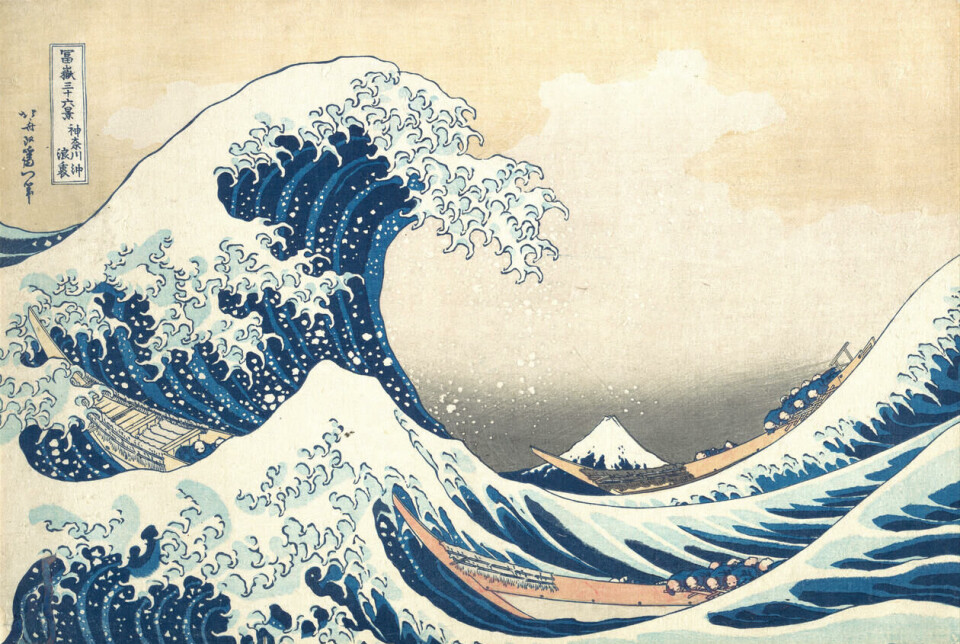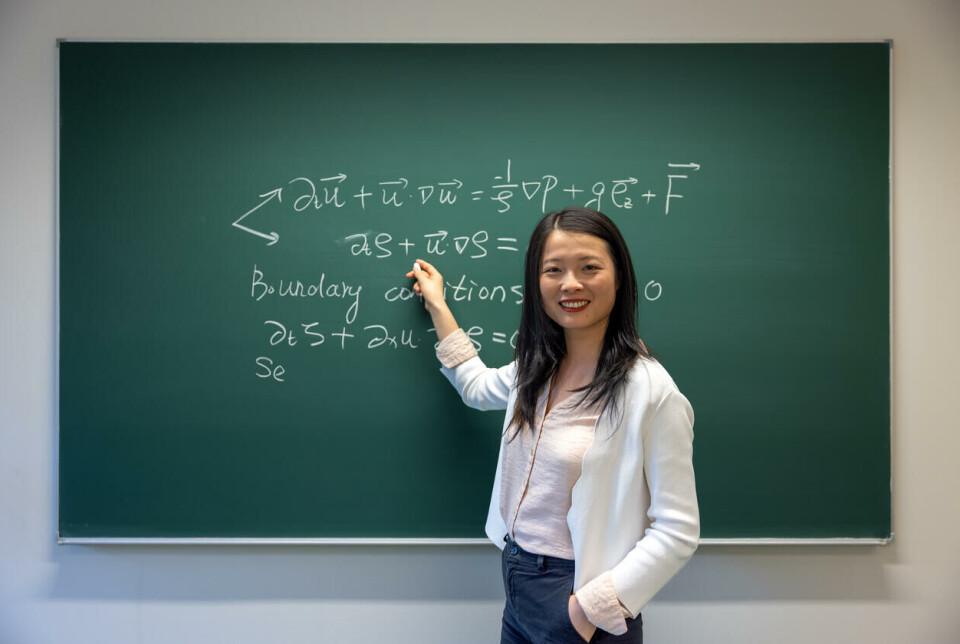THIS CONTENT IS BROUGHT TO YOU BY the University of Bergen - read more

What are rogue waves and why do they occur?
These waves can be approximately three times higher than the average wave height. They are extremely dangerous for ships and other marine operations.
Inside her office at the University of Bergen, Yan Li sits in front of the computer screen, pointing with fascination to a black-and-white image of a cargo ship near the Bay of Biscay.
The ship is facing a giant wave. This wave resembles the famous Hokusai painting The Great Wave off Kanagawa.
The waves appear out of nowhere
Such rogue or freak waves appear out of nowhere. They are much higher than the average waves in the vicinity. They are neither tsunamis nor tidal waves. They are not triggered by earthquakes or landslides.
Until now, nobody can say for sure how they originate. But now, Yan Li is on the trail of a model that is supposed to help predict these frightening waves. Li is a researcher at the University of Bergen's Department of Mathematics and Bjerknes Centre for Climate Research.
She moved from Shanghai to Bergen to study these mysterious waves. It is here, off the coast of Norway and south of Iceland, that the world’s highest waves occur.
As an example of the phenomenon, she mentions the wave that hit the unmanned Norwegian Draupner platforms in the North Sea on New Year’s night in 1995.
Need for a better model
Statoil measured the wave at 25.6 metres, making it the highest individual wave ever recorded by a fixed installation. It is equivalent in size to a 9-story building.
The giant wave accelerated research into this previously unexplained mystery. It is in the wake of this that Li conducts her pioneering research.
“Ocean surface covers more than 70 per cent of the Earth’s surface, and surface waves are everywhere. It struck me: How come oceanographers tend to neglect the effect of surface waves? This realisation led me to understand that we actually need a better model that also considers current, turbulence, and wind,” says Yan Li.

During her master's studies in China, she studied the effects of extreme wave events on offshore structures. It was then she saw the potential of her work to predict the occurrence of extremely large waves.
A more realistic ocean surface
Current models are based on a completely flat ocean surface. The model Li is developing starts with a realistic ocean surface that is in motion.
"Essentially, it focuses on modeling the crucial physical processes in the atmosphere-wave-current coupling,” she says.
With the OceanCoupling project, Li introduces a new and paradigm shifting method which permits us to both physically resolve the extreme wave events and their coupling with large-scale ambient environment like the ocean circulation. This can only be achieved through a system that considers waves, currents, and atmosphere as a whole – the Wave-Current-Atmosphere (WCA) system.
Such a method is a crucial next step as local extreme wave events are higly relevant to oceonographers.
Li is eager to explore the potential of this approach in modeling the more complex WCA system.
Providing more reliable data
We are entering a critical period for sustainable ocean development and net-zero emissions. Both aspects have stimulated rapid growth in innovative technologies to meet our need for renewable energy and large international monitoring projects for the oceans.
Initially, Li is developing the model to create a product that can be useful for geophysicists, oceonographers, and others seeking better calculations.
The project will provide more reliable data by monitoring events.
The outcomes will provide timely links to ocean surface remote sensing products that monitor the ocean surface. They will equip us with a feasible tool to tackle the ever-increasing wave extremes due to climate changes and innovative technologies for renewable energy.

This insight can be used to optimize turbine performance and safety in developing offshore wind farms.
Li aims to collaborate with major ongoing projects like NASA and CNES’s SWOT satellite project. They monitor the ocean surface with the goal of achieving millimetre-level precision.
“My model can contribute valuable input in this context. We can monitor events in real-time and use the models to provide feedback to such projects,” she says.
Higher, steeper, more frequent
Rogue waves occur in two forms: individually or as ‘three sisters’. These enormous waves can cause serious consequences such as death and significant destruction.
Concern is growing about how climate change may lead to increasingly higher, steeper, and more frequent waves.
“An important thing to note is that when we talk about extreme weather, people think of cold waves, heatwaves, or extreme weather conditions like heavy rain. But it also means that ocean waves can become steeper, and rogue wave events can also become even more frequent,” says Li.
The BBC's documentary on freak waves.
References:
Li et al. Why rogue waves occur atop abrupt depth transitions, Journal of Fluid Mechanics, vol. 919, 2021. DOI: 10.1017/jfm.2021.409 (Abstract)
Li, Y. & Chabchoub, A. How Currents Trigger Extreme Sea Waves. The Roles of Stokes Drift, Eulerian Return Flow, and a Background Flow in the Open Ocean, Geophysical Research Letters, vol. 51, 2024. DOI: 10.1029/2023GL107381
Li, Y. On coupled envelope evolution equations in the Hamiltonian theory of nonlinear surface gravity waves, Journal of Fluid Mechanics, vol. 960, 2023. DOI: 10.1017/jfm.2023.205
———
Read the Norwegian version of this article on forskning.no

This content is paid for and presented by the University of Bergen
This content is created by the University of Bergen's communication staff, who use this platform to communicate science and share results from research with the public. The University of Bergen is one of more than 80 owners of ScienceNorway.no. Read more here.
More content from the University of Bergen:
-
Researcher: Politicians fuel conflicts, but fail to quell them
-
The West influenced the Marshall Islands: "They ended up creating more inequality"
-
Banned gases reveal the age of water
-
Researchers discovered extreme hot springs under the Arctic
-
Tiny particles unlock vinegar’s hidden healing potential
-
“Why doesn't it rain more?” asks researcher




































